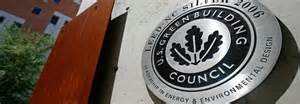 The way to really jump-start the green movement is to convince private enterprises that alternative energy and responsible practices can also help their bottom line.
The way to really jump-start the green movement is to convince private enterprises that alternative energy and responsible practices can also help their bottom line.
Money is powerful and in politics ever-present, as long as leaders of industry believe old practices are better for their profit margins, it will be difficult to make strong headway on tightening regulations. However, though legal regulations may move slowly, money talks and the push by the Leadership in Energy and Environmental Design (LEED) green building rating system has been the impetus for change, raising the standards above legal minimums and in the process birthing evidence that sustainable practices can provide better values than obsolete methods ever did.
The LEED rating system was developed to “evaluate a building’s resource efficiency and environmental impacts.” Under President Clinton the U.S. Green Building Council, between 1993 and 1998, developed what is now the world standard for sustainable building projects. Since 1998 there has been an exponential shift, away from established norms, towards sustainable building delivery systems.
The rating system encourages construction projects to look at new ways of doing things, to consider not just the bottom line but the triple bottom line. The traditional business mindset was that switching to sustainable practices involved an opportunity cost, trading in efficient, cost-effective methods for environmentally friendly methods that would pay off in less tangible ways over the long term.
The truth is that, technology has evolved quickly and new best practices have made it easy to put together a sustainable project simply by buying equipment right off the shelf, with no extraordinary effort required. Furthermore, over the past 15 years it has been shown that buildings built with sustainability in mind can not only be cost effective, but can reduce operational costs by an average of 30%.
The rating system is broken down into 7 categories: sustainable sites, water efficiency, energy & atmosphere, materials & resources, indoor environmental quality, innovation and design, and regional priority. The final section, Regional Priority,” is new and, as the name suggests, varies between areas. Each category has a breakdown of goals and for each benchmark achieved, points will be awarded to the petitioner. Total points will be tabulated and the project will be awarded the LEED certification for the point threshold they attain.
In order to have points approved, businesses must approach their design process strategies aimed at general issues and then implement specific tactics which will be judged for certification upon their submittal.
For instance, when dealing with stormwater management, strategies may include minimizing impervious surface areas, controlling runoff and harvesting rainwater. Tactics, on the other hand, are the actual solutions implemented by a project.
When attempting to control stormwater runoff, popular tactics include dry ponds, constructing temporary erosion barriers and minimizing slope modifications . The very first point that can be gained in the checklist falls under the category Site Selection and is itself the point for site selection.
Strategies for success should include restricting sites to those included in the credit listing, preserving and incorporating the site’s natural features and considering wildlife.

